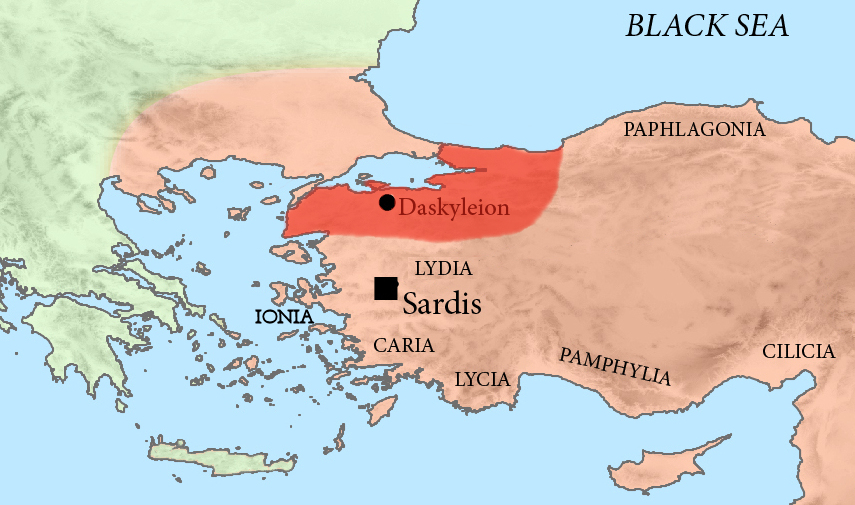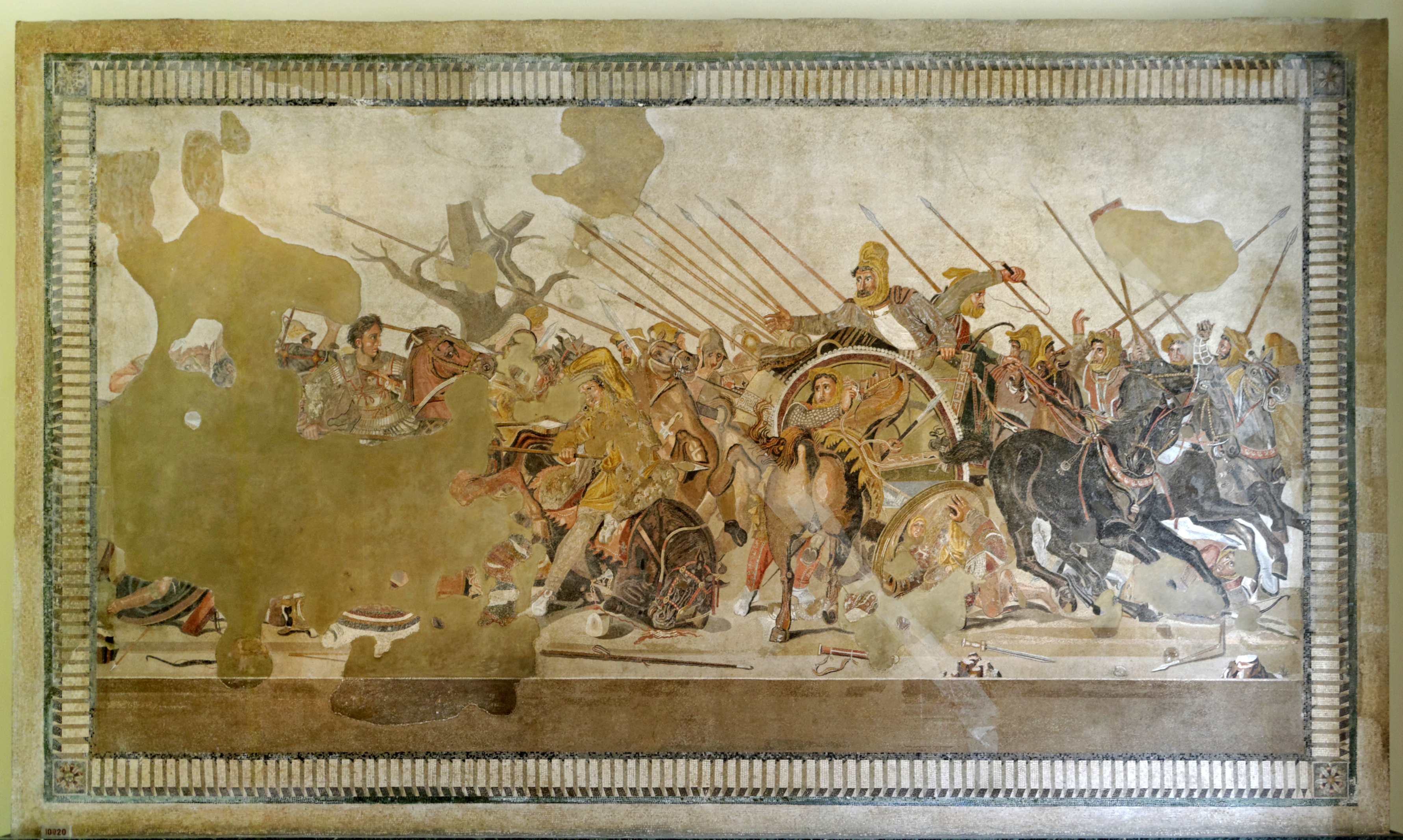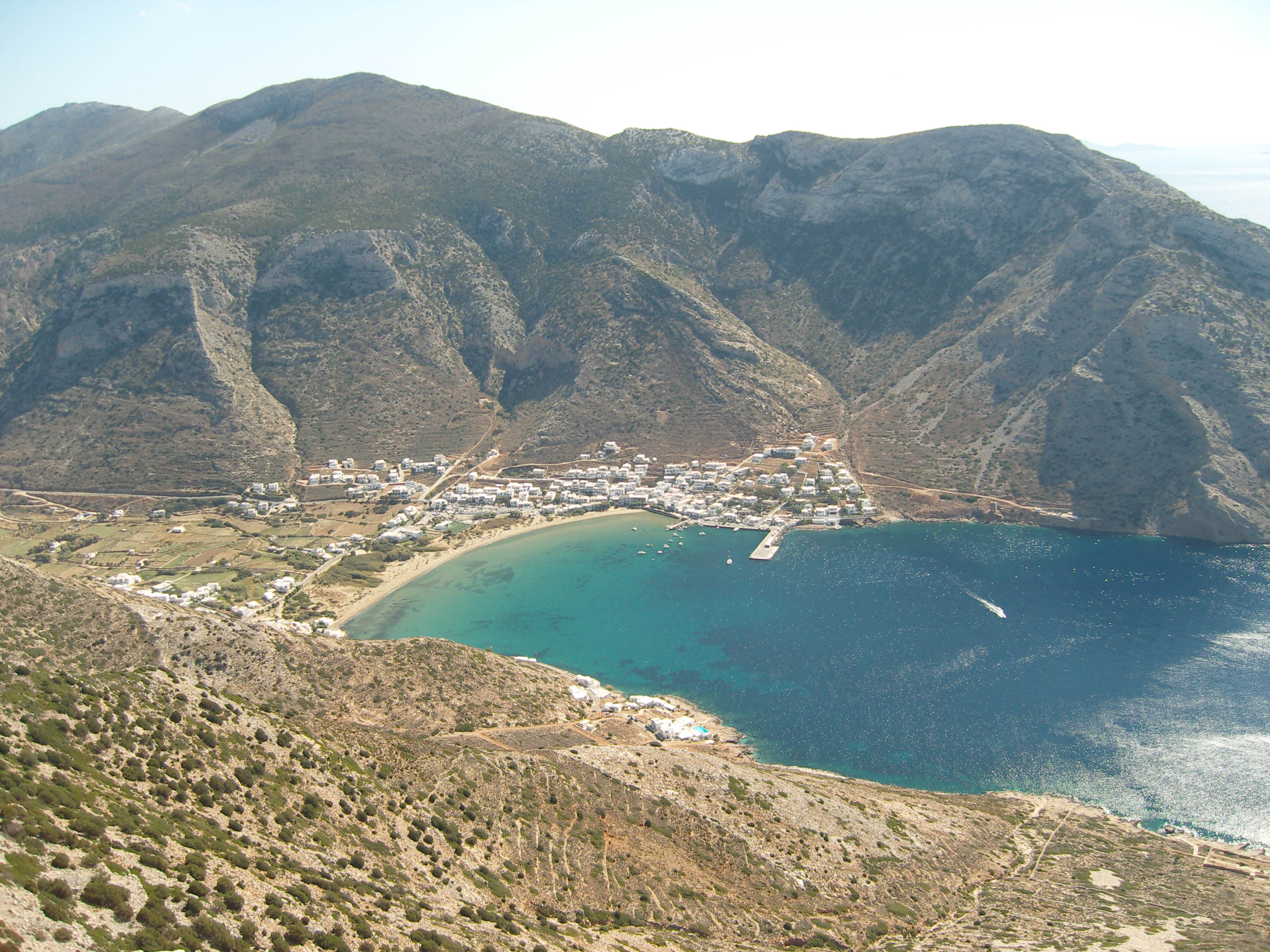|
Pharnabazus, Son Of Artabazus
Pharnabazus III (Old Iranian: ''Farnabāzu'', Ancient Greek: ''Φαρνάβαζος''; c. 370 BC - after 320 BC) was a Persian satrap who fought against Alexander the Great. His father was Artabazus II, and his mother a Greek from Rhodes. Youth in Macedonia Pharnabazus was the son of Artabazus, satrap of Hellespontine Phrygia. However, Artabazus was exiled after a failed rebellion against Artaxerxes III in 358 BC. From 352 to 342, the family went into exile to Macedonia, in the capital of Pella, under the rule of king Philip II (360-336), where they met the young Prince Alexander, future Alexander the Great. With Artabazus and Pharnabazus was Memnon of Rhodes, a Greek mercenary and relative by marriage. Artabazus, Pharnabazus and Memnon were later allowed to return to Persia, in 343 BC. Memnon obtained the command of the Persian navy in the Aegean sea in 334 BC, with Pharnabazus joining him. War against Alexander When Alexander invaded the Persian empire, Memnon defended the ... [...More Info...] [...Related Items...] OR: [Wikipedia] [Google] [Baidu] |
Old Iranian
The Iranian languages or Iranic languages are a branch of the Indo-Iranian languages in the Indo-European languages, Indo-European language family that are spoken natively by the Iranian peoples, predominantly in the Iranian plateau, Iranian Plateau. The Iranian languages are grouped in three stages: Old Iranian (until 400 BCE), Middle Iranian (400 BCE–900 CE) and New Iranian (since 900 CE). The two directly-attested Old Iranian languages are Old Persian (from the Achaemenid Empire) and Avestan, Old Avestan (the language of the Avesta). Of the Middle Iranian languages, the better understood and recorded ones are Middle Persian (from the Sasanian Empire), Parthian language, Parthian (from the Parthian Empire), and Bactrian language, Bactrian (from the Kushan Empire, Kushan and Hephthalites, Hephthalite empires). , there were an estimated 150–200 million native speakers of the Iranian languages. ''Ethnologue'' estimates that there are 86 languages in the group, with the large ... [...More Info...] [...Related Items...] OR: [Wikipedia] [Google] [Baidu] |
Autophradates
Autophradates (Old Persian: ; Ancient Greek: , lived 4th century BC) was a Persian Satrap of Lydia, who also distinguished himself as a general in the reign of Artaxerxes III and Darius III. Rule as a satrap of Lydia During the reign of the Artaxerxes II, Autophradates captured Artabazus, the satrap of Lydia and Ionia who had revolted against the Persian king, and made him his prisoner, but afterwards was forced to set him free. Autophradates was also directed by Artaxerxes to put down the rebellion of the satrap of Cappadocia Datames. He went with a large army, but was obliged to retreat with heavy loss. Autophradates later joined the Revolt of the Satraps. Resistance to Alexander the Great Autophradates participated to the Achaemenid resistance against the campaigns of Alexander the Great in Asia Minor. Together with Pharnabazus III he supported militarily and financial the king of Sparta Agis III who was organizing resistance against the Macedonians. After the death of ... [...More Info...] [...Related Items...] OR: [Wikipedia] [Google] [Baidu] |
Battle Of The Hellespont (321 BC)
The Battle of the Hellespont took place in 321 BC between the armies of Craterus and Neoptolemus against Eumenes. It was part of the wars between Alexander's successors. Eumenes and Neoptolemus were sent by Perdiccas to prevent Craterus crossing the Hellespont into Asia, but Neoptolemus deserted to join Craterus. Eumenes won the battle, and both Craterus and Neoptolemus were killed. Prelude The death of Alexander the Great in 323 BC threw his empire into a state of political and military turmoil, with his generals and governors splitting up the empire as his “Successors” (the Diadochi). Perdiccas inherited the main Macedonian army and the title ‘regent of the Asiatic Empire.’ He also tried to marry Alexander’s sister Cleopatra of Macedon, which would have given him a claim to the Macedonian throne. Because of this a coalition of other successors formed against him. An army under Craterus was sent to Asia to confront Perdiccas and his allies. Perdiccas sent Eumenes ... [...More Info...] [...Related Items...] OR: [Wikipedia] [Google] [Baidu] |
Altıkulaç Sarcophagus Combat Scene (detail) , a 4th-century sarcophagus
{{disambig ...
Altıkulaç can refer to: * Altıkulaç, Abana, a village in Turkey * Altıkulaç, Çan * Altıkulaç Sarcophagus The Altıkulaç Sarcophagus, or Çan sarcophagus, is an early 4th century BCE (400-375 BCE) sarcophagus. It is sometimes said to be in the Greco-Persian style. The sarcophagus was found in 1998 in a circular corbel-vaulted tomb within the Çing ... [...More Info...] [...Related Items...] OR: [Wikipedia] [Google] [Baidu] |
Eumenes
Eumenes (; grc-gre, Εὐμένης; c. 362316 BC) was a Greek general and satrap. He participated in the Wars of Alexander the Great, serving as both Alexander's personal secretary and as a battlefield commander. He later was a participant in the Wars of the Diadochi as a supporter of the Macedonian Argead royal house. He was executed after the Battle of Gabiene in 316 BC. Early career Eumenes was a native of Cardia in the Thracian Chersonese. At a very early age, he was employed as a private secretary by Philip II of Macedon and after Philip's death (336 BC) by Alexander the Great, whom he accompanied into Asia. After Alexander's death (323 BC), Eumenes took command of a large body of Macedonian and other Greek soldiers fighting in support of Alexander's son, Alexander IV. Satrap of Cappadocia and Paphlagonia (323-319 BC) In the ensuing division of the empire in the Partition of Babylon (323 BC), Cappadocia and Paphlagonia were assigned to Eumenes; but as they were not ye ... [...More Info...] [...Related Items...] OR: [Wikipedia] [Google] [Baidu] |
The Fight Of Eumenes Of Cardia Against Neoptolemus, Wars Of The Diadochi
''The'' () is a grammatical article in English, denoting persons or things already mentioned, under discussion, implied or otherwise presumed familiar to listeners, readers, or speakers. It is the definite article in English. ''The'' is the most frequently used word in the English language; studies and analyses of texts have found it to account for seven percent of all printed English-language words. It is derived from gendered articles in Old English which combined in Middle English and now has a single form used with pronouns of any gender. The word can be used with both singular and plural nouns, and with a noun that starts with any letter. This is different from many other languages, which have different forms of the definite article for different genders or numbers. Pronunciation In most dialects, "the" is pronounced as (with the voiced dental fricative followed by a schwa) when followed by a consonant sound, and as (homophone of pronoun ''thee'') when followed by a ... [...More Info...] [...Related Items...] OR: [Wikipedia] [Google] [Baidu] |
Darius III
Darius III ( peo, 𐎭𐎠𐎼𐎹𐎺𐎢𐏁 ; grc-gre, Δαρεῖος ; c. 380 – 330 BC) was the last Achaemenid King of Kings of Persia, reigning from 336 BC to his death in 330 BC. Contrary to his predecessor Artaxerxes IV Arses, Darius was a distant member of the Achaemenid dynasty. During his early career, he was reportedly an obscure figure among his peers and first rose to prominence during the Cadusian expedition of Artaxerxes III in the 350s BC. As a reward for his bravery, he was given the Satrapy of Armenia. Around 340 BC, he was placed in charge of the royal "postal service," a high-ranking position. In 338 BC, Artaxerxes III met an abrupt end after being poisoned by the court eunuch and chiliarch (''hazahrapatish'') Bagoas, who installed his youngest son Arses on the throne. He only reigned for a few years, until Bagoas had him poisoned as well. Darius was subsequently installed on the throne and soon forced Bagoas to drink his poison after discovering that ... [...More Info...] [...Related Items...] OR: [Wikipedia] [Google] [Baidu] |
Andros
Andros ( el, Άνδρος, ) is the northernmost island of the Greek Cyclades archipelago, about southeast of Euboea, and about north of Tinos. It is nearly long, and its greatest breadth is . It is for the most part mountainous, with many fruitful and well-watered valleys. The municipality, which includes the island Andros and several small, uninhabited islands, has an area of . The largest towns are Andros (town), Gavrio, Batsi, and Ormos Korthiou. Palaeopolis, the ancient capital, was built into a steep hillside, and the breakwater of its harbor can still be seen underwater. At the village of Apoikia, there is the notable spring of Sariza, where the water flows from a sculpted stone lion's head. Andros also offers great hiking options with many new paths being added each year. History Antiquity During the Final Neolithic (over 5,000 years ago), Andros had a fortified village on its west coast, which archaeologists have named Strofilias, after the plateau on which it ... [...More Info...] [...Related Items...] OR: [Wikipedia] [Google] [Baidu] |
Siphnos
Sifnos ( el, Σίφνος) is an island municipality in the Cyclades island group in Greece. The main town, near the center, known as Apollonia (pop. 869), is home of the island's folklore museum and library. The town's name is thought to come from an ancient temple of Apollo on the site of the church of Panayia Yeraniofora. The second-largest town is Artemonas (pop. 800), thought to be named after an ancient temple of Apollo's sister-goddess Artemis, located at the site of the church of Panayia Kokhi. The village of Kastro (pop. 118), was the capital of the island during ancient times until 1836. It is built on top of a high cliff on the island's east shore and today has extensive medieval remains and is the location of the island's archeological museum. The port settlement, on the west coast of the island is known as Kamares (245). Geography Sifnos lies in the Cyclades between Serifos and Milos, west of Delos and Paros, about (80 nautical miles) from Piraeus (Athens' p ... [...More Info...] [...Related Items...] OR: [Wikipedia] [Google] [Baidu] |
Samothrace
Samothrace (also known as Samothraki, el, Σαμοθράκη, ) is a Greek island in the northern Aegean Sea. It is a municipality within the Evros regional unit of Thrace. The island is long and is in size and has a population of 2,859 (2011 census). Its main industries are fishing and tourism. Resources on the island include granite and basalt. Samothrace is one of the most rugged Greek islands, with Mt. Saos and its highest peak Fengari rising to . The ''Winged Victory of Samothrace'', which is now displayed at the Louvre in Paris, originates from the island. History Antiquity Samothrace was not a state of any political significance in ancient Greece, since it has no natural harbour and most of the island is too mountainous for cultivation: Mount Fengari (literally 'Mt. Moon') rises to . It was, however, the home of the Sanctuary of the Great Gods, site of important Hellenic and pre-Hellenic religious ceremonies. Among those who visited this shrine to be initiated in ... [...More Info...] [...Related Items...] OR: [Wikipedia] [Google] [Baidu] |
Ancient Tenedos
Tenedos (, ''Tenedhos'', ), or Bozcaada in Turkish, is an island of Turkey in the northeastern part of the Aegean Sea. Administratively, the island constitutes the Bozcaada district of Çanakkale Province. With an area of it is the third largest Turkish island after Imbros (Gökçeada) and Marmara. In 2018, the district had a population of 3023. The main industries are tourism, wine production and fishing. The island has been famous for its grapes, wines and red poppies for centuries. It is a former bishopric and presently a Latin Catholic titular see. Tenedos is mentioned in both the ''Iliad'' and the ''Aeneid'', in the latter as the site where the Greeks hid their fleet near the end of the Trojan War in order to trick the Trojans into believing the war was over and into taking the Trojan Horse within their city walls. The island was important throughout classical antiquity despite its small size due to its strategic location at the entrance of the Dardanelles. In the fol ... [...More Info...] [...Related Items...] OR: [Wikipedia] [Google] [Baidu] |
Mytilene
Mytilene (; el, Μυτιλήνη, Mytilíni ; tr, Midilli) is the capital of the Greek island of Lesbos, and its port. It is also the capital and administrative center of the North Aegean Region, and hosts the headquarters of the University of the Aegean. It was founded in the 11th century BC. Mytilene is one of the two municipalities on the island of Lesbos, created in 2019; the other is West Lesbos. Mytilene is built on the southeast edge of the island. It is the seat of a metropolitan bishop of the Eastern Orthodox Church. History As an ancient city, lying off the east coast, Mytilene was initially confined to a small island just offshore that later was joined to Lesbos, creating a north and south harbor. The early harbors of Mytilene were linked during ancient times by a channel 700 m long and 30 m wide. The Roman writer Longus speaks of white stone bridges linking the two sides. The Greek word εὔριπος ''eúripos'' is a commonly-used term when referring to a st ... [...More Info...] [...Related Items...] OR: [Wikipedia] [Google] [Baidu] |


.jpg)

.png)




_(cropped).jpg)
